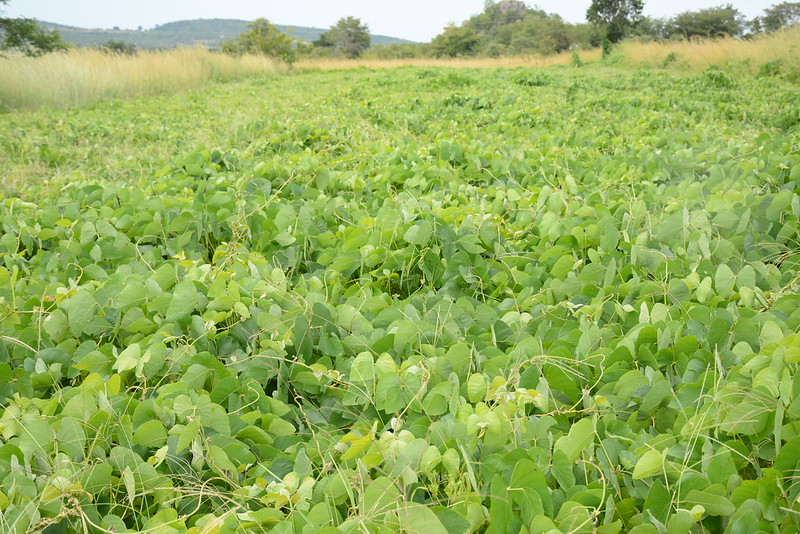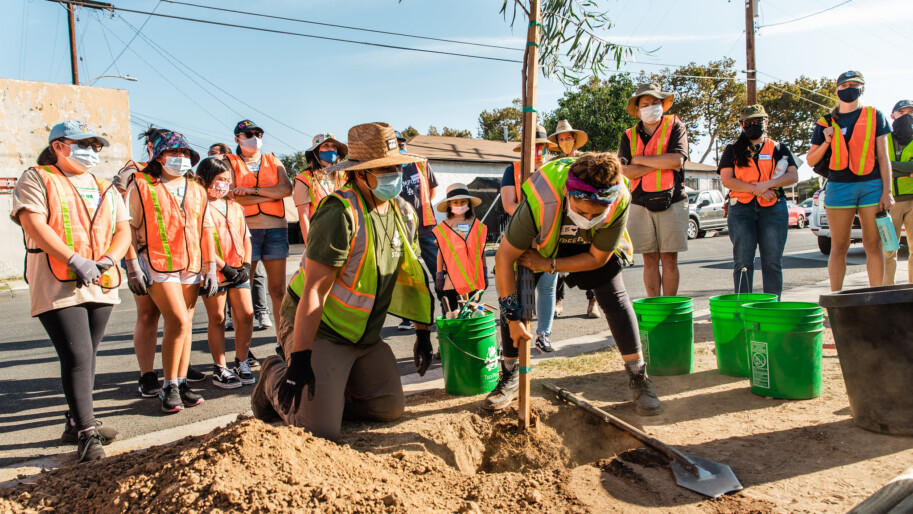Last year, Governor Newsom signed into law a suite of climate bills to accelerate California’s climate progress and protect frontline communities. Among those new laws was AB 1757 (C. Garcia & R. Rivas), which directs state agencies to scale up the use of nature-based solutions to meet California’s climate goals.
Building on an earlier bill The Climate Center co-sponsored and another we supported — AB 2649 (C. Garcia) and AB 284 (R. Rivas) — AB 1757 directs state agencies to set ambitious targets for natural carbon sequestration and greenhouse gas emissions reductions, establish methods to measure carbon on our lands, and update the state’s strategy for climate-smart land management. It also establishes an expert advisory committee made up of researchers, practitioners, and environmental justice and tribal representatives to help agencies accomplish the directives of the bill.
California’s goal of reaching carbon neutrality by 2045 means we must cut greenhouse gas emissions dramatically, by 85 percent below 1990 levels. While the latest science tells us that 2045 is too late, we’re working to simultaneously scale up the drawdown of past climate pollution in the atmosphere and accelerate California’s climate goals. Today, natural carbon removal can help offset hard-to-decarbonize sectors of the economy. Eventually, as we phase out fossil fuels and dramatically reduce climate pollution, California can reach net-negative emissions.
There are two approaches to drawing existing carbon pollution down from the atmosphere — mechanical and natural. While mechanical removal technologies (such as direct air capture) may have a role to play in the future, they are too new, too expensive, and too energy-intensive to rely on. In fact, direct air capture currently sequesters only 0.1 metric tons of carbon dioxide equivalent annually across the entire world. Meanwhile, California must draw down 65 million metric tons annually by 2045 just to reach carbon neutrality.
Natural carbon sequestration, on the other hand, has the potential to draw down more than 100 million metric tons of carbon dioxide equivalent per year.
What is natural carbon sequestration?
Natural carbon sequestration is the process by which plants absorb carbon through photosynthesis, store it in biomass (leaves, stems, branches, etc.), and bury the rest in the soil. Microorganisms in the soil then use that carbon to grow their microbial communities, which also increase soil biodiversity and health. Tree-planting, wetland restoration, and compost application are all examples of the many types of projects that harness the Earth’s natural systems to pull carbon out of the atmosphere.
Not only does natural carbon sequestration serve as a strategy to mitigate climate change, it also adapts our lands to the climate impacts we’re already experiencing. For example, climate-smart agricultural practices like planting cover crops and hedgerows allow farms to weather drought by increasing water retention in soils. Planting trees in urban environments improves air quality in otherwise heavily-polluted areas, provides shade and cooling, and reduces flood risk by allowing excess water to be absorbed in the ground rather than pooling on the concrete.

What does AB 1757 do?
AB 1757 directs the California Natural Resources Agency (CNRA), in collaboration with the Air Resources Board (CARB), Department of Food and Agriculture (CDFA), and newly established expert advisory committee, to develop targets for sequestering carbon on and reducing emissions from our natural and working lands by January 1, 2024. Statutory targets are crucial to ensuring the state directs the necessary resources to move work forward on the ground and meet our statewide climate goals.
Building upon the modeling that CARB did for its 2022 Scoping Plan, AB 1757 directs state agencies to work with the expert advisory committee to identify and fill in the gaps necessary to get a more complete picture of the carbon stocks in our natural environment. This deeper understanding of the potential of the state’s natural and working lands will then allow specific actions to be prioritized in the state’s overall plan to achieve carbon neutrality.
In addition to establishing targets, AB 1757 includes three other key steps for expanding the state’s natural carbon sequestration efforts:
- By January 1, 2025, CARB shall establish standard methods for state agencies to track emissions and sequestration across landscapes, as well as co-benefits where possible.
- By January 1, 2025, CNRA shall update the Natural and Working Lands Climate Smart Strategy to achieve the new targets.
- By January 1, 2025, and every two years thereafter, CNRA shall publish data on its website on the progress made towards achieving the newly established targets.
This comprehensive plan to identify carbon stocks, scale up action, and track benefits gives California the opportunity to unlock the potential for natural and working lands to become a huge tool in the fight against climate change. And the researchers and practitioners on the expert advisory committee can make sure this work is effective, equitable, and strategic.
The expert advisory committee’s meetings are open to the public to listen and provide comment. The Climate Center and our partners will be engaging with the committee during these meetings in an effort to fully leverage the potential that our lands have of serving as a carbon sink when managed properly. For more information on AB 1757 and the expert advisory committee meetings, visit CNRA’s website.


